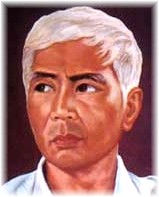This article by Kent Davis appears in the current edition of TouchStone magazine, the excellent quarterly product of the NGO, HeritageWatch. Kent is a good friend and allowed me to reproduce it here.
Death of an AngelHow antiquities theft destroys Cambodia’s past…and future. By Kent Davis kentdavis@gmail.comHer exquisite features expressed her Khmer heritage so perfectly she was chosen to become immortal. No one had spoken her name for nearly 900 years but certainly thousands had admired her beauty; her almond eyes, the gentle cleft in her chin, her benevolent gaze, her full lips and deep smile conveyed warmth that set her apart from other women. Once adorned with a golden crown, jewelry and accoutrements this flower of the Khmers became divine. She answered her king’s highest calling in the temple of Beng Melea.
The Khmer race created some of history’s most fantastic and innovative art. Their civilization emerged at the crossroads of Southeast Asia, clearly influenced by ancient Indian culture, yet the Khmer vision of religion, kingship, sculpture, architecture and beauty set them apart from any other ethnic group. Khmer temples, their holiest of places, were actual models of heaven on Earth, ensuring balance, prosperity and fertility for their land. In the first half of the 12th century, King Suryavarman II built Cambodia’s most famous monument, Angkor Wat, still featured as the central image of the country’s flag.
To the southeast another magnificent structure rose from the jungle, Beng Melea temple, incorporating many of Angkor Wat’s elements on a smaller scale. Experts date it to the same period, yet its builder, architect and precise purpose remain unknown. In the style of Angkor Wat, Beng Melea’s designers and sponsors prominently included female deities, now referred to as devatas (when standing) or apsaras (when dancing). Balancing masculine and feminine forces in the universe was a key component of Khmer religion. Ancient accounts confirm that women held important positions in Khmer society so it isn’t surprising to see women represented in temples as well. What is surprising is the unique style of these portrayals at the peak of the Khmer culture in the 12th-13th centuries. Rather than generic images of impersonal goddesses, many devatas appear to be portrait carvings of actual women in divine context. These stone images show facial features, poses and personalities that imply individual women were the source of their inspiration.
The angel of Beng Melea was one such woman.
I found her on a sweltering hot day in March 2006 while working on my quantitative analysis of Angkor Wat’s devatas. When I heard of Beng Melea’s similar style I took a daytrip there to investigate. Despite the collapse of most of its structures, Beng Melea is majestic in its jungle setting and well worth exploring. Sadly, most of its devatas were weathered beyond recognition, but when I climbed the pile of stones previously forming the northwest corner tower I had a surprising encounter. She was hidden by vines beneath a stone overhang. Decades or even centuries ago, the tower’s collapse formed a protective alcove around her. While all her sisters suffered erosion from exposure to the elements she alone remained preserved, still fulfilling the divine duties she was charged with so long ago.
My inexpensive camera didn’t focus well in her compact hiding place so I already planned to return to see her again. Back in Siem Reap I saw my friend Jaro Poncar, a professor from the University of Cologne who has been photographing Khmer structures for more than ten years. Jaro was surprised that he himself had never seen this devata before, making her discovery even more special to me. It took me nearly a year to mount my next research trip. In February 2007 I returned to Cambodia with my wife Sophaphan and a new camera. After three days of shooting at Angkor Wat we headed to Beng Melea and I anticipated introducing my wife to my hidden friend.
We arrived at the northwest tower and I sent Sophaphan up to look first, awaiting her shout of delight. Instead, she said, “What am I supposed to see?” “The devata! The only one here that’s well preserved,” I said. “Look, down in the alcove!” “She’s not there,” came her reply. I clambered up the rocks to find a faceless section of white rock. Clearly, someone had recently attempted to steal her head but the stone’s stress cracks caused her to break unevenly. She, who had survived the collapse of her temple, the weather and the wars of nearly a thousand years, had been destroyed in a moment by a thief’s chisel. For a few dollars, the Khmer race lost a piece of its soul. Cambodia lost an irreplaceable part of its heritage. And Beng Melea became a bit less attractive, and less financially viable, to the Cambodian economy as a tourist destination.
I don’t write these words to fault anyone. The company administrating Beng Melea built the road that enables visitors to easily access this remote site. Apsara Authority is charged with protecting a vast area and countless treasures on a limited budget. And whoever destroyed this angel did so out of ignorance and possibly out of economic necessity.
The only solution is education. With the help of Heritage Watch and other organizations Cambodian leaders can teach Khmer people that their heritage is their most priceless possession. With care and preservation the Khmer legacy will support this land and its people far into the future. But now this angel will not be there to see it. Her time has passed forever.
Reproduced courtesy of TouchStone Magazine – July-September 2007 www.HeritageWatch.org





